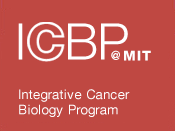| Title | Rap1 and its effector RIAM are required for lymphocyte trafficking. |
| Publication Type | Journal Article |
| Year of Publication | 2015 |
| Authors | Su, W, Wynne, J, Pinheiro, EM, Strazza, M, Mor, A, Montenont, E, Berger, J, Paul, DS, Bergmeier, W, Gertler, FB, Philips, MR |
| Journal | Blood |
| Volume | 126 |
| Issue | 25 |
| Pagination | 2695-703 |
| Date Published | 2015 Dec 17 |
| ISSN | 1528-0020 |
| Keywords | Adaptor Proteins, Signal Transducing, Animals, B-Lymphocytes, Cell Adhesion, Chemotaxis, Leukocyte, Integrins, Membrane Proteins, Mice, Mice, Knockout, rap1 GTP-Binding Proteins, T-Lymphocytes |
| Abstract | Regulation of integrins is critical for lymphocyte adhesion to endothelium and trafficking through secondary lymphoid organs. Inside-out signaling to integrins is mediated by the small GTPase Rap1. Two effectors of Rap1 regulate integrins, RapL and Rap1 interacting adaptor molecule (RIAM). Using mice conditionally deficient in both Rap1a and Rap1b and mice null for RIAM, we show that the Rap1/RIAM module is not required for T- or B-cell development but is essential for efficient adhesion to intercellular adhesion molecule (ICAM) 1 and vascular cell adhesion molecule (VCAM) 1 and for proper trafficking of lymphocytes to secondary lymphoid organs. Interestingly, in RIAM-deficient mice, whereas peripheral lymph nodes (pLNs) were depleted of both B and T cells and recirculating B cells were diminished in the bone barrow (BM), the spleen was hypercellular, albeit with a relative deficiency of marginal zone B cells. The abnormality in lymphocyte trafficking was accompanied by defective humoral immunity to T-cell-dependent antigens. Platelet function was intact in RIAM-deficient animals. These in vivo results confirm a role for RIAM in the regulation of some, but not all, leukocyte integrins and suggest that RIAM-regulated integrin activation is required for trafficking of lymphocytes from blood into pLNs and BM, where relatively high shear forces exist in high endothelial venules and sinusoids, respectively. |
| DOI | 10.1182/blood-2015-05-644104 |
| Alternate Journal | Blood |
| PubMed ID | 26324702 |
| PubMed Central ID | PMC4683330 |
| Grant List | GM055279 / GM / NIGMS NIH HHS / United States GM58801 / GM / NIGMS NIH HHS / United States P01-HL120846 / HL / NHLBI NIH HHS / United States P30-CA016087 / CA / NCI NIH HHS / United States P30-CA14051 / CA / NCI NIH HHS / United States T32 HL007151 / HL / NHLBI NIH HHS / United States T32-GM007308 / GM / NIGMS NIH HHS / United States U54-CA112967 / CA / NCI NIH HHS / United States |
